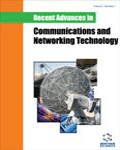Abstract
Different methods of standard definition (SD) to high definition (HD) image conversion are compared according to the PSNR criterion. Subjective comparison is difficult as there is almost no quality difference between them. For comparison, an original HD and the correspondent SD images are required. The SD image is up-converted to approximate HD images using various methods and then these approximated images are compared to the original HD image. In such a comparison the main question is how to generate the SD image. Both analytical and simulation results show that the method of generation of the SD image has a great influence on the outcome of PSNR results. Immediate down-sampling, Filtered down-sampling, Discrete Fourier Transform (DFT)-based down-sampling and Discrete Cosine Transform (DCT)-based down-sampling are methods we used to generate SD image from the original HD image. Ideal low pass signal (Nyquist) interpolation, DFTbased up-sampling and DCT-based up-sampling are the three methods we used to up-convert SD to HD image. As it is seen, the highest PSNR (least error) is the mean squared value of the omitted high frequency components during down-sampling process in transform-based methods. The analytical formulation of PSNR in filtered-based methods is not simple due to distortions in the frequency response of filters and aliasing in frequency domain.
Keywords: Discrete cosine transform, discrete fourier transform, down-sampling, nyquist rate, PSNR, upsampling.
Graphical Abstract
 16
16











